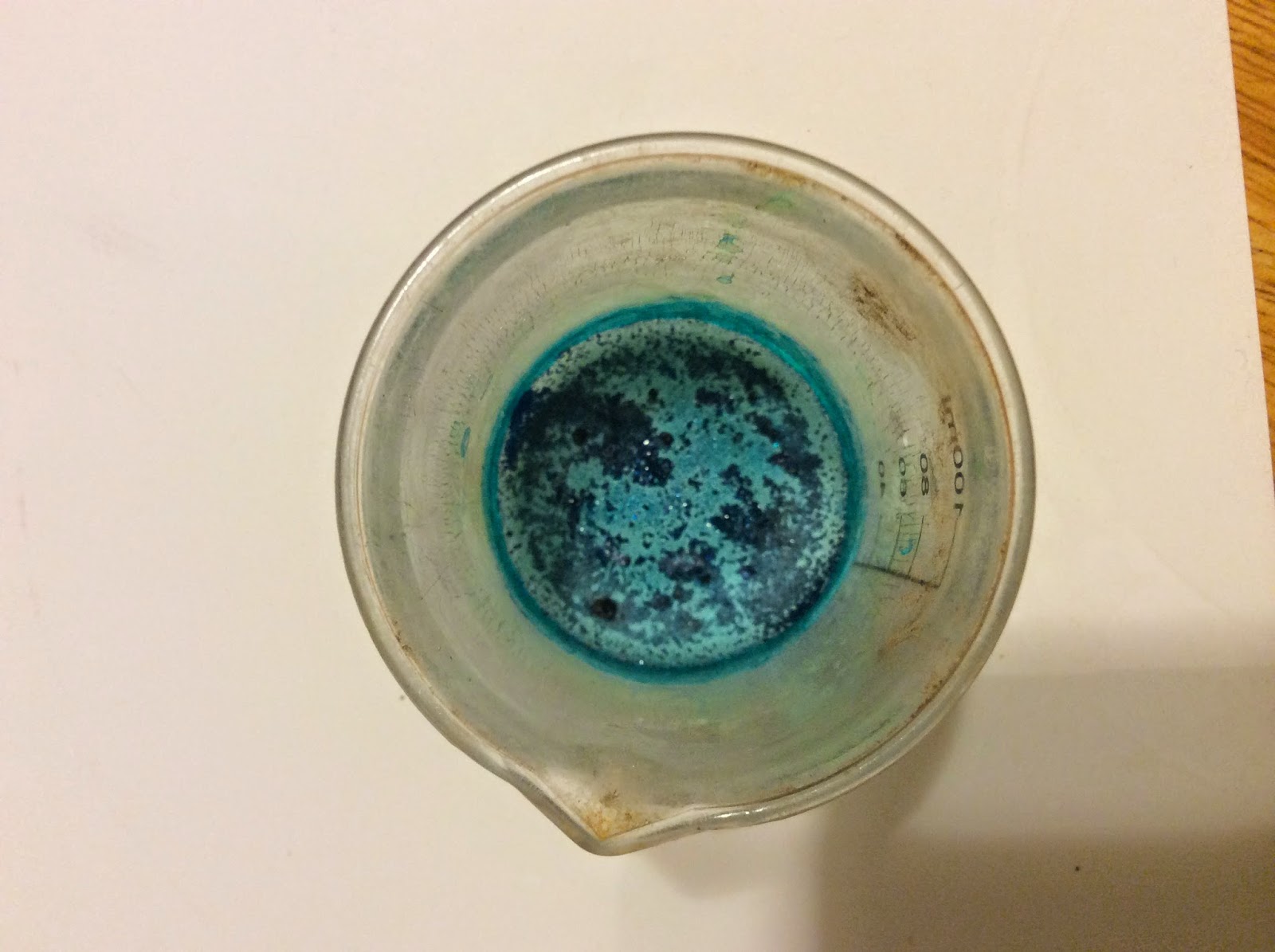The crystal I will be showing is called Copper Acetate.
This usually happens with most the transition metals in the periodic table of elements . This includes copper, iron, cobalt, nickel, and maganese (not magnesium). These metals, originally silver colored, will create different crystal colors.
Disclaimer: Since this experiment involves heat, and Oxygen gas is produced, it's HIGHLY recommended you do this OUTSIDE or in a fumehood. Oxygen can help sustain fires. I am not responsible for any injury or loss to any person by doing this experiment, by mistreating the instructions, or by not moving outside or in a fumehood.
These are the materials you need (I used electrical wire for copper. You can't use modern pennies as they contain more zinc than copper) You also need a heat-resistant glass, as we'll deal with heat in this experiment.
Here's the steps:
1. Take an equal amount of peroxide and vinegar, then mix them in your beaker. Do this BEFORE you add copper!
2. Heat it up, if you want to make this experiment go faster. You can use a microwave at around 10 seconds, or if you are not willing to contaminate your microwave, you may use a torch or candle to heat. This heating is optional, but without it, you may have to wait a day for the reaction to finish.
3. Now drop in the copper, and the liquid should fizzle and turn blue. This bubbling is Oxygen gas, so it's recommended you do this outside without any flames nearby!! Oxygen can sustain fires!
4. This process is finished when there is no bubbling left. Remove the copper and wait for the cup to naturally dry.
If you want to know the chemical equation for this reaction, it's:
Cu + 2 CH3COOH + H2O2 = Cu(CH3COO)2 + 2 H2O
The bubbling is caused separately, because copper is a catalyst in decomposing hydrogen peroxide.
2H2O2 = 2H2O + O2
Here are my results:
These crystals aren't big, but I have made bigger crystals(by a method called supersaturation)
They appear black, but holding them to light makes them blue.



No comments:
Post a Comment